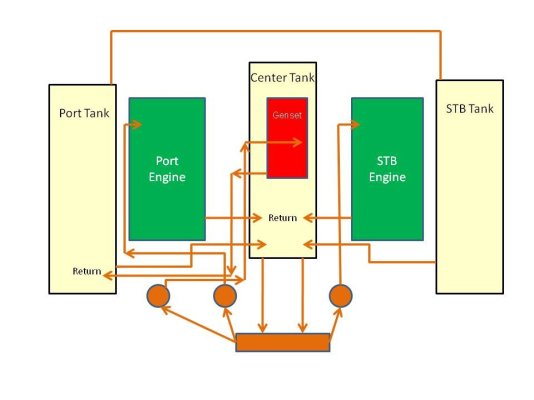marinetrader
Senior Member
- Joined
- Oct 6, 2007
- Messages
- 301
Some weeks ago, I found that* I needed to replace some fuel lines so I chose to replace all of them at the same time.* During the process, I did a complete inspection of the fuel system aboard my 40 Labelle.*
I found, much to my amazement, that the generator fuel return did not go to the center day tank but fed to the port tank.* So when we ran the generator often, the vessel would develop a slight list.
So with some careful planning, I devised a crossover series of valves and lines to connect both the starboard and port saddle tanks together; now the fuel is always equalized.
I found, much to my amazement, that the generator fuel return did not go to the center day tank but fed to the port tank.* So when we ran the generator often, the vessel would develop a slight list.
So with some careful planning, I devised a crossover series of valves and lines to connect both the starboard and port saddle tanks together; now the fuel is always equalized.


